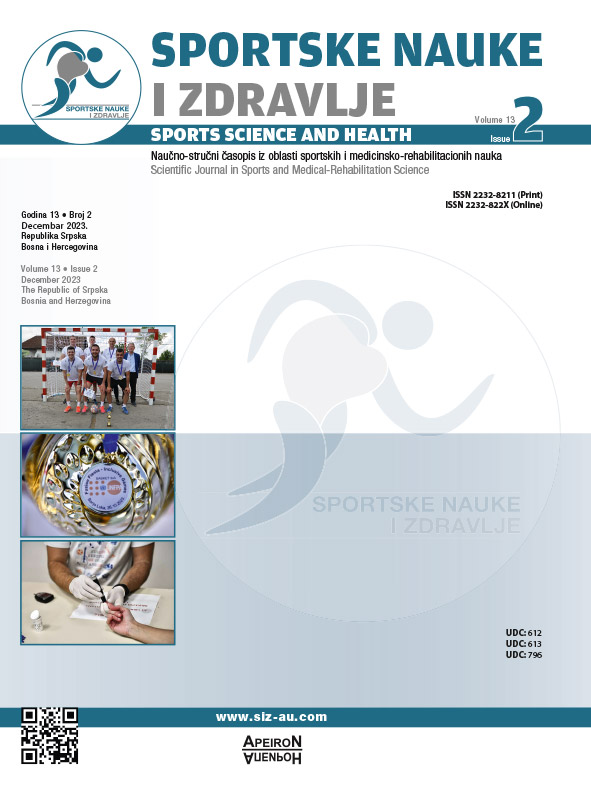Motor abilities of students with specific learning disabilities and a student of regular development
DOI:
https://doi.org/10.7251/SSH2302167SAbstract
The timely development of motor abilities contributes to the overall development of students, but due to various potential problems, there are often deviations that can affect the quality of daily movement. The aim of the research was to assess the motor abilities of primary education students, and to determine significant differences in individual motor abilities with regard to the existence of a particular learning difficulty or not. The research was conducted on a sample of 101 students (47 students aged 9 years ± 6 months and 54 students aged 10 years ± 6 months). Standardized tests were applied to assess motor abilities: repetitive strength, coordination, speed, explosive power of jumping, agility, flexibility and balance. The basic descriptive indicators were calculated, and the t-test for independent samples was used to determine the significance of differences in motor abilities with regard to the existence of specific learning difficulties. Results: Of the total sample, 75.25% were students without learning disabilities, and 24.75% with specific learning disabilities. Students with no established learning difficulties achieved significantly better results in the variables that assess flexibility (AS1=60.43±18.90 vs.AS2=52.59±12.93; t=1.99; p=0.05 ), balance (AS1=114.51±107.29 vs. AS2=68.04±75.62; t=2.07; p=0.04), explosive jumping power (AS1=147.09±23.24 vs. AS2=134.15±20.17; t=2.57; p=0.01) and coordination (AS1=20.11±8.78 vs. AS2=26.97±11.84; t=-3.17; p=0.00) from students with specific learning difficulties. Conclusion: Students with specific learning difficulties have less developed individual motor abilities than students with normal development, which encourages thinking about whether it is necessary to adjust the evaluation criteria to their abilities.
